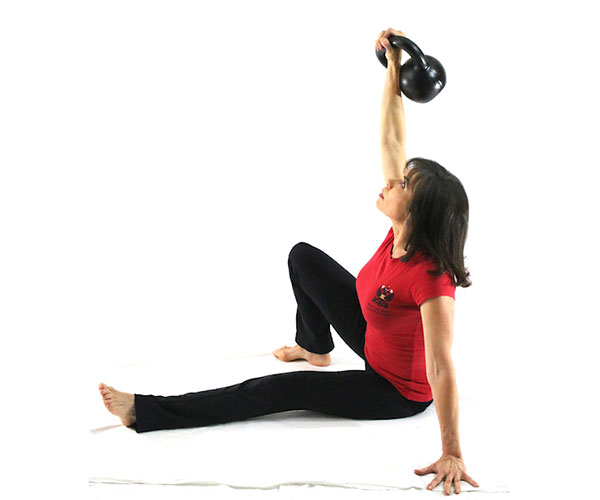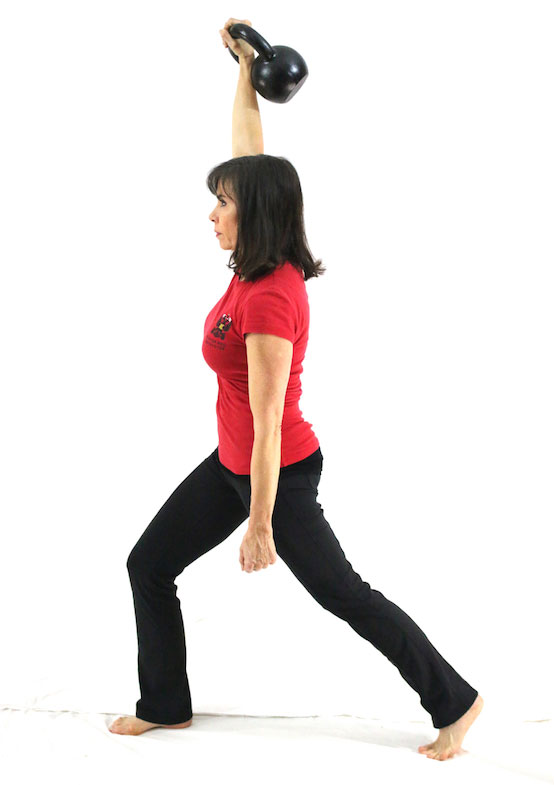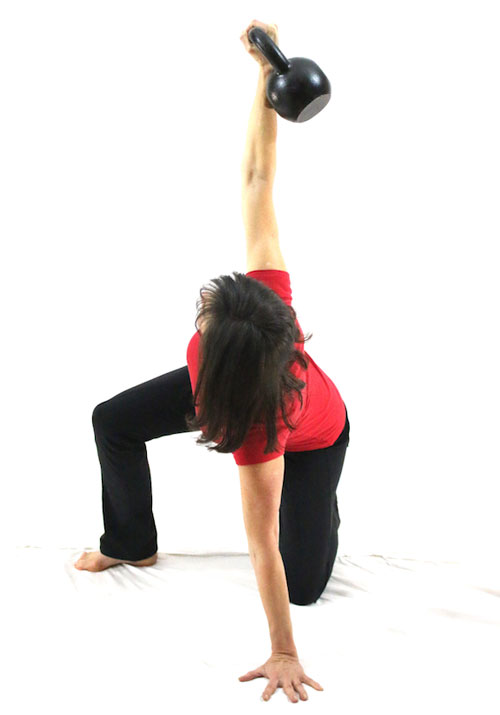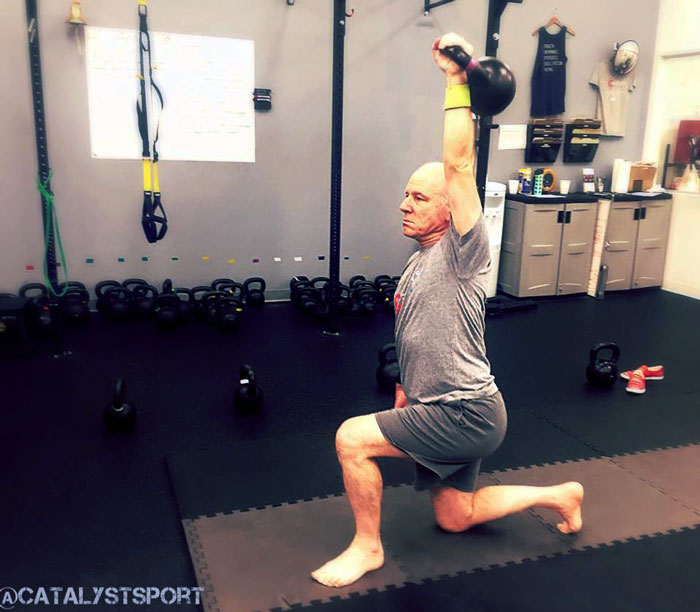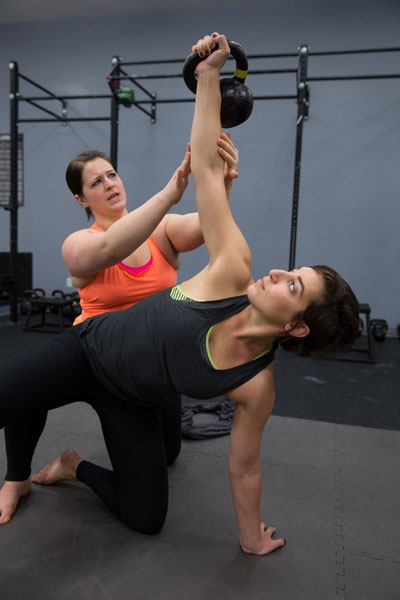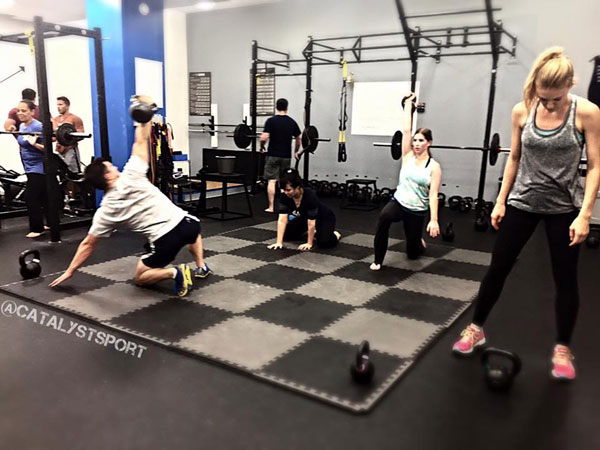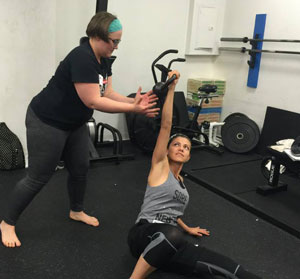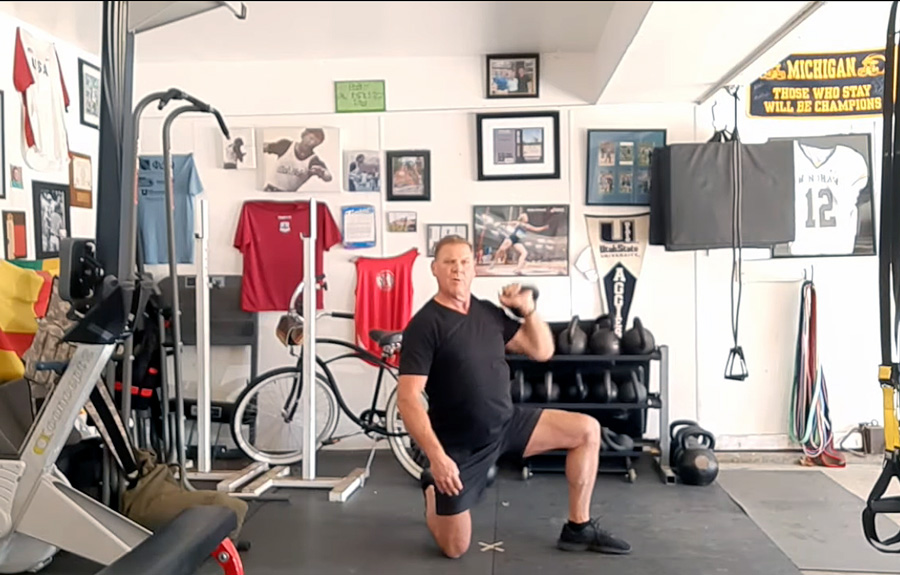
Let me cut straight to the point, something I rarely do: the Turkish Get Down Press (TGDP) has allowed me to speed up the teaching process of three of the most difficult kettlebell exercises to teach and master:
- The Turkish Get Up
- The Windmill “Family”
- The Bent Press
Actually, the TGDP has helped me speed up the teaching of the entire pressing family, too, but I like my world to fit neatly in threes. Certainly, you may know the exercise, but like The Rock’s world in Jungle Cruise, there seems a whole lot more to discover
I liked the movie. Just saying.
Committing to a few rounds of this lift might save you a lot of time and energy later trying to explain the hows and whys of doing the movement.
If you know how my brain works, you also know that this “all starts with a story.” We, my morning training corps (my Intentional Community), were having a typical gym discussion about what to do next in the workout. For the record, not EVERY thing we do in training is computer generated perfection.
Actually, the BEST things we do are usually cobbled together. Not every group can handle a Jazz Improv training program but it seems to work with us as we are a mix of ages, occupations and experience.
I had just returned from a workshop. At said workshop, someone asked about having a workout with just a single kettlebell and a basic knowledge of Tim Anderson’s Original Strength. (I include an example at the end) and we talked about how much I love, love I tell you, doing the Half-Kneeling Press for home trainees. Including me.
Done correctly, with the 90-degree angles at the knees and a tall position of the body, the Half-Kneeling Press stretches, mobilizes, and strengthens a host of bodyparts and “just feels good.”
And, of course, the question came up.
“Which hand with which knee?”
You see, with this press varietal, you have some options. You can press with one arm…or two. You can have your left knee down or your right knee. As you know, in lifting there are three knees:
- The Left Knee
- The Right Knee
- The Hiney
I crack myself up. By the way, spellcheck does NOT like my spelling of “hiney.” For your illumination, I give you the dictionary explanation of my awful joke:
The first records of hiney come from the first half of the 1900s. It is derived from words based on the root word hind, meaning “the back,” as in behind (another euphemism for the buttocks) and hindquarters. The suffix -y or -ie is used to add an endearing or euphemistic quality to words—to make them cuter or more familiar, as in granny and doggie.
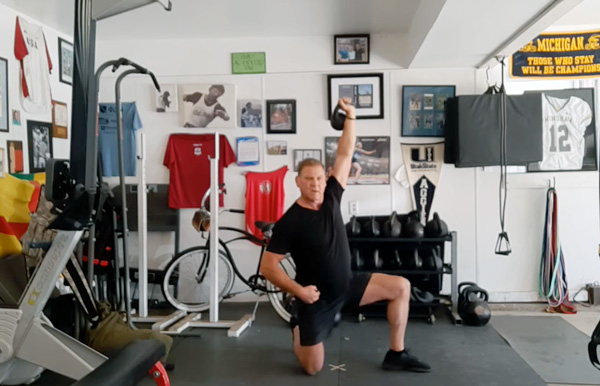
We came to a decision as a group that the left knee should be down if pressing with the right hand and the right knee should be down if pressing with the left hand.
Why?
The Turkish Get Up!!!
Actually, one would learn this doing a correct Turkish Get Down. And, for total candor, it is the Turkish Get Down Press that got us thinking of this reason.
You don’t know the Turkish Get Down Press? Let me say this: for speeding up the teaching of the TGU, I have yet to find anything better than the TGD Press. It’s very simple:
At each step of the TG Down, add a press. I am telling you this now also: go lighter than you think.
Simply, here you go:
- I suggest snatching the bell up to the top. You can certainly clean and press but that adds an additional press to a lot of presses.
- Standing tall, press the bell.
- Step back with the foot opposite the bell into what I call the Cross Country Ski Position. For the record, the “key” to the TGD is a longish step back as it gives you space to move later. The knee will get close to touching the ground, but don’t let it touch. Press the kettlebell.
- Bring the knee down to the Half-Kneeling position. Press the bell.
- Windshield Wiper the front foot. I recommend pressing the bell here, too.
- Hinge back and bring the free hand to the floor. The hand, knee and foot should all be in a line. The knee should bisect that line. Press the bell.
(It should feel like a warmup for the Bent Press because it is a warmup for the Bent Press) Look, an asterisk: * (See Below)
- Sweep the butt through to the Tall Sit Position. Press the bell.
- Roll to the elbow. Press the bell.
- Roll to the floor. Press the bell.
- With BOTH hands, bring the bell down, cuddle it, roll to the side and release the bell safely to the floor.
*Position Six is called the Kneeling Windmill and will be the focus of the next article in this series.
Let’s watch someone demonstrate it. The model seems to know what to do.
That’s eight presses. That’s a lot of presses. Moreover, as you will discover, the press grooves were different almost every press. I find that my shoulders feel better after this exercise. This movement can be done for mobility work and this is what I use the move for in my own training.
The TGDP can also be done for hypertrophy. If you did three rounds of both sides for eight total reps per round (24 total presses per hand), I’m just guessing something good would happen. Perhaps you would get those “shoulders that are the envy of your friends” that I used to read about in the muscle magazines. My friends envy my naturally curly hair (with a nod to Peanuts).
So, yes, this exercise is a great exercise. For my work with kettlebells, there are other values to this movement.
First, I’m not sure there is a better way to teach the Turkish Get UP. The Turkish Get DOWN with presses stops the participant at several key points and holds these positions in place. If you can’t get the press groove, there is a good chance the bell is in the wrong place. Most of the little troubling positions and points of the TGU are cleaned up with this simple drill.
Second, and it was only at the most recent RKC II that I realized this as clearly as I do now, this drill is gateway to the Windmill and Bent Press family.
Next time, we will dissect the Kneeling Windmill and show you how this single position can teach so much, so fast to so many.
The simple program I promised you.
One KB only mixed with Original Strength.
A1. Left Hand Press (Stand or Half-Kneeling)
A2. Prone Neck Nod
B1. Right Hand Press (Stand or Half-Kneeling)
B2. Prone Find Your Shoes
C1. Goblet Squat
C2. Six Point Rock
D1. March in Place with Load in Left Hand (Suitcase Carry)
D2. Six Point Rock with Left Leg in wide position (Kickstand)
E1. March in Place with Load in Right Hand (Suitcase Carry)
E2. Six Point Rock with Right Leg in wide position (Kickstand)
F1. Swings
F2. Egg Rolls
“Maybe” Day One:
Super set with Sets of Eight (Three Rounds)
A1. Left Hand Press (Stand or Half-Kneeling)
A2. Prone Neck Nod
B1. Right Hand Press (Stand or Half-Kneeling)
B2. Prone Find Your Shoes
Superset with Sets of Eight (Three Rounds)
C1. Goblet Squat
C2. Six Point Rock
Superset for maybe Thirty Seconds each
D1. March in Place with Load in Left Hand (Suitcase Carry)
D2. Six Point Rock with Left Leg in wide position (Kickstand)
E1. March in Place with Load in Right Hand (Suitcase Carry)
E2. Six Point Rock with Right Leg in wide position (Kickstand)
Five Rounds of 15 Swings and appropriate Egg Rolls
F1. Swings
F2. Egg Rolls
“Maybe” Day Two
Three Sets of Eight
A1. Left Hand Press (Stand or Half-Kneeling)
A2. Prone Neck Nod
Three Sets of Eight
B1. Right Hand Press (Stand or Half-Kneeling)
B2. Prone Find Your Shoes
Three Sets of Eight
C1. Goblet Squat
C2. Six Point Rock
Three Rounds of Thirty Seconds Each
D1. March in Place with Load in Left Hand (Suitcase Carry)
D2. Six Point Rock with Left Leg in wide position (Kickstand)
E1. March in Place with Load in Right Hand (Suitcase Carry)
E2. Six Point Rock with Right Leg in wide position (Kickstand)
“Up to 100 Swings”
F1. Swings
F2. Egg Rolls
“Maybe” Day Three
The entire circuit for three rounds of eights and thirty seconds as appropriate.
- Left Hand Press (Stand or Half-Kneeling)
- Prone Neck Nod
- Right Hand Press (Stand or Half-Kneeling)
- Prone Find Your Shoes
- Goblet Squat
- Six Point Rock
- March in Place with Load in Left Hand (Suitcase Carry)
- Six Point Rock with Left Leg in wide position (Kickstand)
- March in Place with Load in Right Hand (Suitcase Carry)
- Six Point Rock with Right Leg in wide position (Kickstand)
- Swings
- Egg Rolls
There you go…off the top of the head but pretty good.
***
Master RKC, Dan John is the author of numerous fitness titles including The Hardstyle Kettlebell Challenge: A Fundamental Guide To Training For Strength And Power, the best selling Never Let Go and Easy Strength. Dan has spent his life with one foot in the world of lifting and throwing, and the other foot in academia. An All-American discus thrower, Dan has also competed at the highest levels of Olympic lifting, Highland Games and the Weight Pentathlon, an event in which he holds the American record.
Dan spends his work life blending weekly workshops and lectures with full-time writing, and is also an online religious studies instructor for Columbia College of Missouri. As a Fulbright Scholar, he toured the Middle East exploring the foundations of religious education systems. For more information visit DanJohn.net
